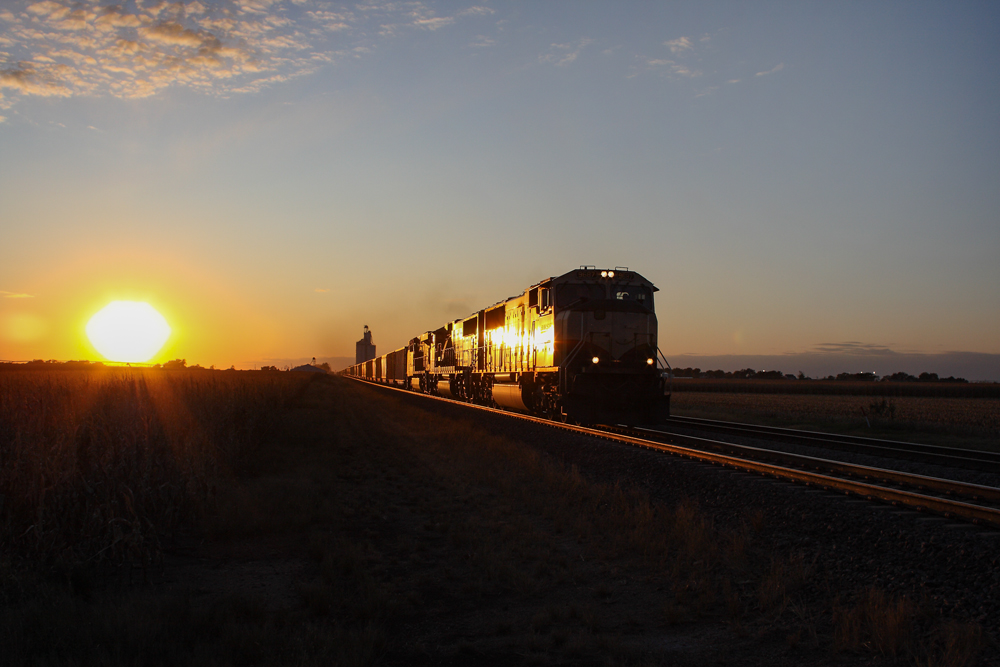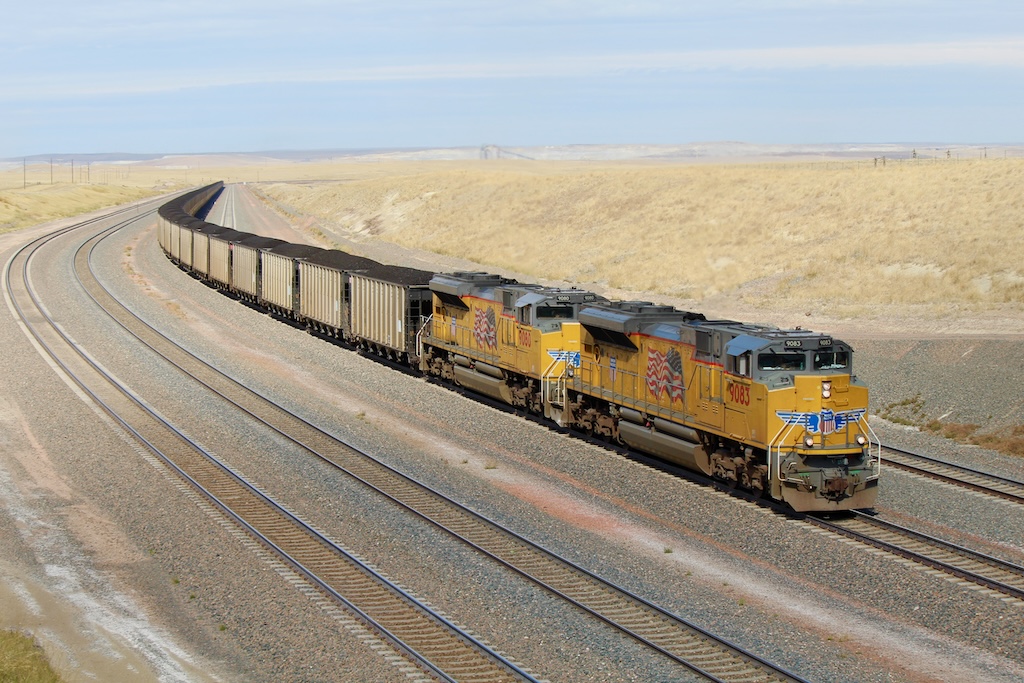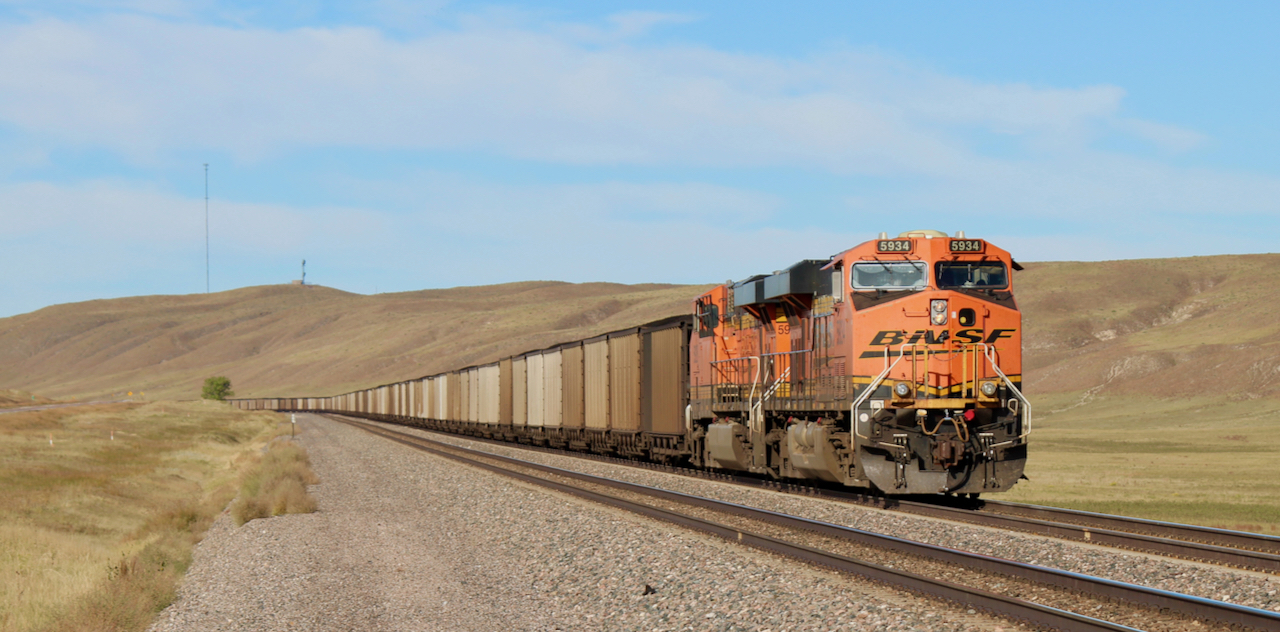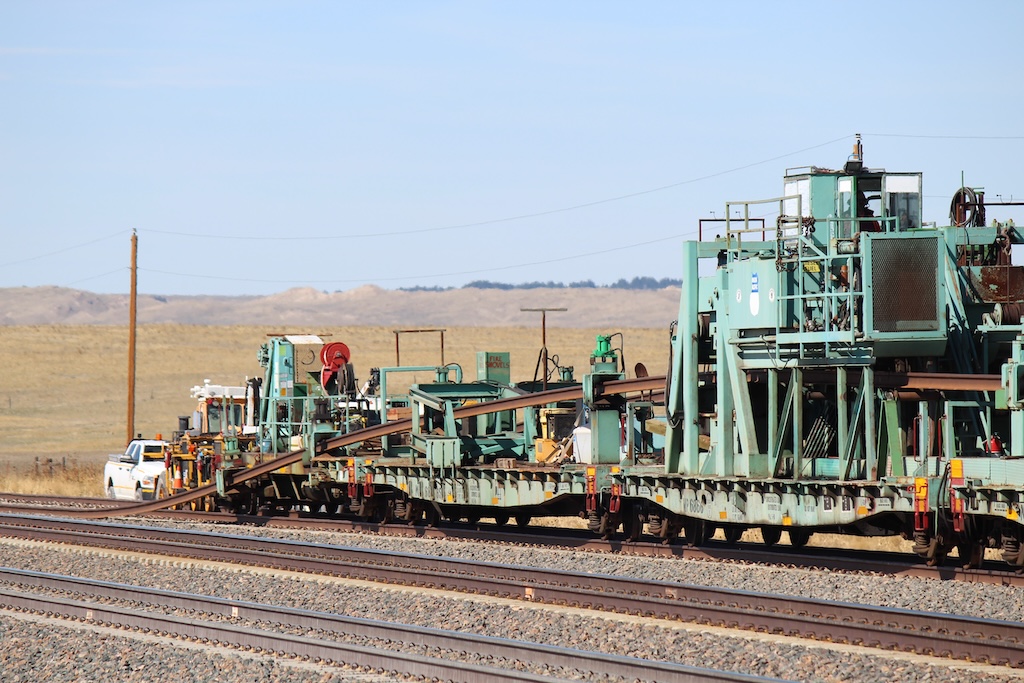
With their Powder River Basin coal volumes down by more than 22% this year — and 58% below the peak of 2008 — is it time for BNSF Railway and Union Pacific to consider rationalizing capacity on their primary coal-hauling routes?
Not yet, the railroads say.
In the heart of the Wyoming coal fields, BNSF and UP share the 103-mile triple-track Joint Line, which features 21 miles of quadruple track over Logan Hill. A 50-mile stretch of the route serves eight mine complexes that produce nearly 40% of the coal the U.S. uses in electricity generation.
The Joint Line, also known as BNSF’s Orin Subdivision, handled a record 168 total loaded and empty coal trains on Nov. 30, 2008. Last month’s daily average volume: A combined 70 or so loaded and empty trains.

The Joint Line, in turn, feeds BNSF and UP main lines that funnel coal to power plants as far away as Texas and the Midwest. The PRB coal boom helped fund the installation of second and third main tracks, additional passing sidings, bypass tracks, and CTC on sections of both railroads across the Midwest and Texas. Notably, the coal traffic prompted UP to add 110 miles of third main on its Overland Route between O’Fallons and Gibbon Junction, Neb.
Last month, BNSF handled an average of 25.8 loaded coal trains out of the PRB, a figure that includes sole-served mines north of Gillette, Wyo. That’s 52% below peak volumes. UP operated an average of 12.1 loaded coal trains per day out of the Southern Powder River Basin last month, down 66% from the 2008 high water mark.
UP’s coal route – between Shawnee Junction, Wyo., and O’Fallons, Neb. – is a double-track railroad that once handled triple the daily traffic than it does now.
But it would cost more to remove track than to continue to maintain it, Union Pacific CEO Jim Vena said in a recent interview. “So there is no plan right now for us to go start to rip up third main lines or any of that infrastructure anywhere,” Vena says.

BNSF agrees with that assessment and has no plans to remove capacity.
“But we have and will continue to evaluate coal route cost management options,” BNSF spokesman Zak Andersen says. BNSF also is contemplating using its primary coal routes as a way to get freight out of the Pacific Northwest faster than using its Northern Transcon.
In 2020, UP did take up 15 miles of third main on Myles Hill that during the peak years kept traffic fluid on the Powder River Subdivision just east of Shawnee, Wyo. It was the last piece of coal capacity UP added to its network and the first to come out. For now, though, that’s an anomaly. Meanwhile, the railroads continue to use one of the four main tracks on the Joint Line for storage of coal train sets.
The U.S. Energy Information Administration expects coal-fired power plants to account for just 16% of the electricity generated this year, down from 48% in 2008. Coal has been elbowed out by low natural gas prices and the fast rise of wind and solar power.
The EIA expects coal production and power generation to continue its long decline in the coming years. But some forecasters say that electricity demand may rise as more people buy electric vehicles and plug-in hybrids, and as more power-hungry data centers and artificial intelligence computing centers are built. And that may require that coal-fired power plants continue to supply power to the grid.
“I’m not bought in on one side or the other,” Vena says.
UP has enough locomotives to double the amount of coal it currently handles. “But I don’t see that,” Vena says. “What I see is we need to grow our business in other products and what happens to coal happens to coal. We can’t control that one.”
Last year BNSF carried 1,469,350 carloads of coal, which was tops in the industry. UP’s coal volume totaled 802,933.















but other types of freight trains on the union pacific that uses the Kearny Subdivision there’s no way that they can’t removed the third main track
Hopefully good sense will eventually prevail and the utility coal market and its traffic will bounce back.
The PW line is one of the most amazing sections of freight railroad in the world.
The Chinook coal mine in Indiana closed in 1999, but the spur that served it didn’t get its rails pulled until 2023. CSX, then INDR stored the coal gondolas on the spur for over 20 years. So even if the Power River mines close anytime soon, the railroads will take their sweet time pulling up the ROW.
The Illinois based Keensburg Mine closed in 1997 and rail spur serving it finally died of pure neglect when it was washed out in 2020. The tipples didn’t even come down until 2023.
So I wouldnt expect a quick rail removal no matter how slow the mining gets in Wyoming.
INDR = INRD or the Indiana Railroad.
What has happened to the surplus crews both RRs?